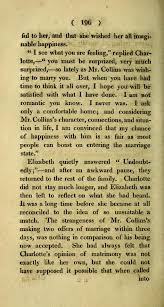The Enduring Legacy of Pride and Prejudice

Introduction
‘Pride and Prejudice,’ written by Jane Austen and published in 1813, is more than just a romantic novel; it is a commentary on social class, gender roles, and individualism in early 19th century England. This timeless masterpiece has continued to resonate with readers worldwide since its release and is a staple in literary discussions, academic studies, and adaptations in various media. Understanding its significance today allows for a deeper appreciation of its themes and historical context.
Main Body
Historical Context
Set in the backdrop of Regency-era England, the novel presents a structured society governed by class distinctions. The Bennet family’s struggles to secure advantageous marriages for their daughters encapsulate the efforts of women during this period to attain social stability through marriage. This societal pressure highlights the limitations faced by women and the value placed on wealth and status.
Thematic Exploration
The primary themes of ‘Pride and Prejudice’ include love, reputation, and individuality. Through the evolving relationship between Elizabeth Bennet and Mr. Darcy, the novel challenges the superficial judgments based on social class. Elizabeth’s spirited character and her refusal to conform to societal expectations epitomize the idea of individualism and self-respect. The turning point in Darcy’s character, where he overcomes his pride and prejudice, emphasizes the importance of personal growth and understanding.
Modern Relevance
Even more than two centuries after its publication, the themes of ‘Pride and Prejudice’ remain pertinent. The search for love, the critique of social norms, and the quest for identity can be seen mirrored in contemporary society. Adaptations in film, television, and literature have introduced the story to new generations, allowing for diverse interpretations that resonate with modern audiences. Recent adaptations have expanded the narrative to address issues of race, class, and gender fluidity, showcasing the novel’s versatility in tackling various societal issues.
Conclusion
‘Pride and Prejudice’ stands as a testament to Jane Austen’s literary genius, transcending its time and maintaining relevance in today’s discourse around love, gender, and class. The novel reminds readers of the importance of understanding oneself and others beyond first impressions. As society continues to evolve, Austen’s work offers timeless insights that encourage reflection on the complexities of human relationships, making it a beloved classic well into the future.









